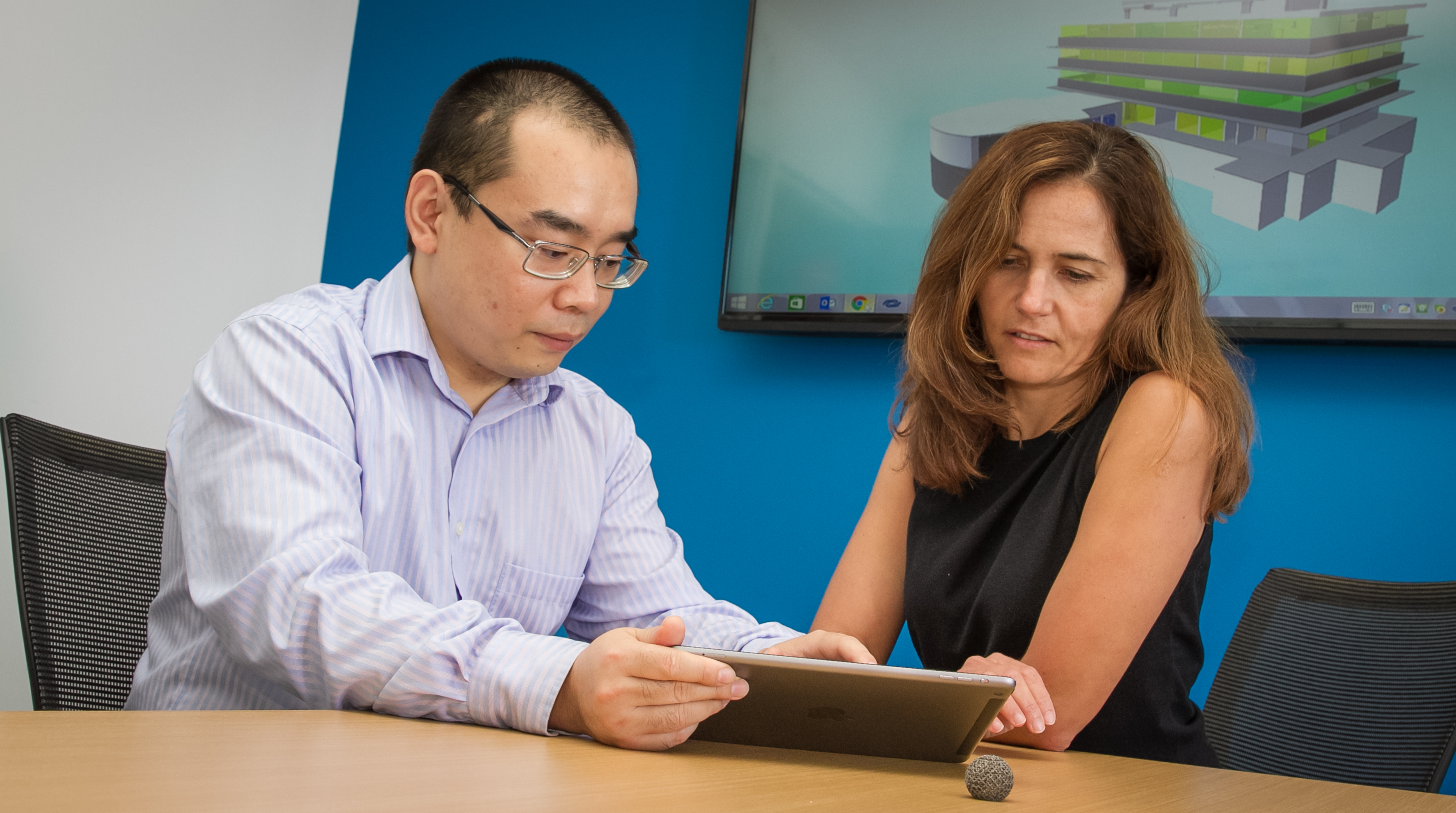
Using AI to Detect Energy Waste
Xuesong “Pine” Liu was determined to develop the technology to help commercial facilities managers mitigate energy waste in their buildings, but he believed doing so required him to go beyond academic study and laboratory research.
So, he took a job in the Facilities Management Services Department at Carnegie Mellon University, where he could more fully understand the challenges building managers face in maintaining the properties under their purview and how they manage the complicated energy using systems inside.
Liu’s decision to work in asset management was in service of improving the Artificial Intelligence (AI) software he had spent years developing with Burcu Akinci, the Paul Christiano Professor of Civil and Environmental Engineering and Associate Dean for Research. That software, now offered through Liu and Akinci’s 2016 CEE spinoff LeanFM Technologies, provides facilities managers with the means to analyze data collected from existing sensors to identify, diagnose, and eliminate energy waste in their building’s HVAC systems due to faults. LeanFM is a PropTech, a company uses information technology for the real estate industry.
“The experience was very important for me to understand the current practice of building management and to identify the areas where information technologies can help,” says Liu (CEE PhD ’12, MS ’09, CS MS ’09). What Liu learned on the job – where his responsibilities included managing digital drawings and manuals of equipment on campus, creating preventative maintenance tasks, and monitoring building automation systems – informed improvements to LeanFM’s technology to better meet the needs of commercial building managers.
While the ability to quickly detect and remediate faults or energy waste in buildings is important to facilities managers and owners on a practical level, there is a more global imperative for minimizing such waste, says Akinci.
“We talk about energy shortages and energy consumption,” she says. “Buildings are one of the biggest sources of energy usage, and HVAC systems are one of the biggest sources of energy usage in buildings.”
The United States Department of Energy states that between 25 percent and 60 percent of energy used in the HVAC systems of commercial buildings is wasted.
Akinci says that diagnosing faults and quantifying energy waste associated with them is challenging because of the complexity of most HVAC systems and their unique behaviors within each building.
“Each building is different, and each HVAC system is different, and the behaviors of the systems and the components within the system are different,” says Akinci.
Liu says that what makes LeanFM’s technology successful is that it is designed to comprehensively analyze data collected from existing sensors throughout HVAC systems.
Because LeanFM uses such a comprehensive amount of data, it can offer clients the information they need to effectively resolve issues as they arise, he says.
“After we get the sensors’ data, we combine that data with the building design,” he says. By considering the data in terms of the building’s architectural and mechanical design, the full context of the problem is easier to discern. “If you only have the sensor data, you only have the individual data. If you put it into the full context of the building, we know what that data means and how the system is supposed to work.”
Liu says the company is on track to meet projections for expanding its client base, which currently includes hospitals, commercial buildings and hotels.
Akinci says the age of the building is not determinative of whether the level of energy usage can be improved.
“It is amazing to see how much improvement can be made, even in buildings that have been operating for fewer than two years, through active identification and mitigation of faults in HVAC systems,” Akinci says. “By harnessing the large amounts of data that modern buildings generate, and coupling that with context-driven AI approaches, we are able to reduce energy usage and improve fault detection.”
For Liu, founding LeanFM was a natural outgrowth of CEE’s research orientation and collaborative environment. He says he believes CMU is unique in its emphasis on collaborative research, which encourages a multi-disciplinary approach to solving problems.
“It’s not like it’s encouraged necessarily, but it is more like a habit,” he says. “It’s a very unique feature at CMU.”